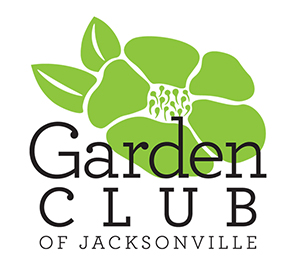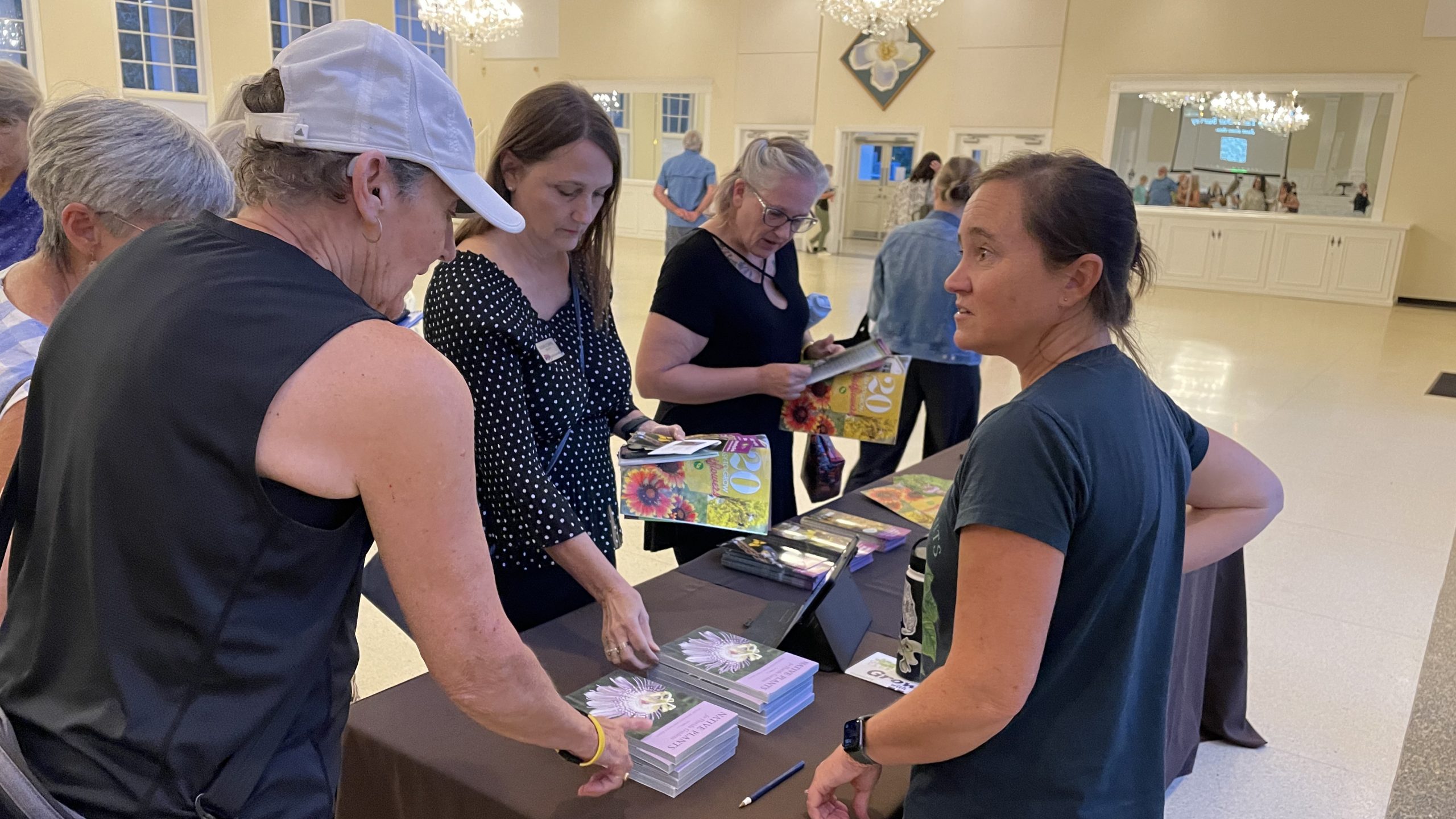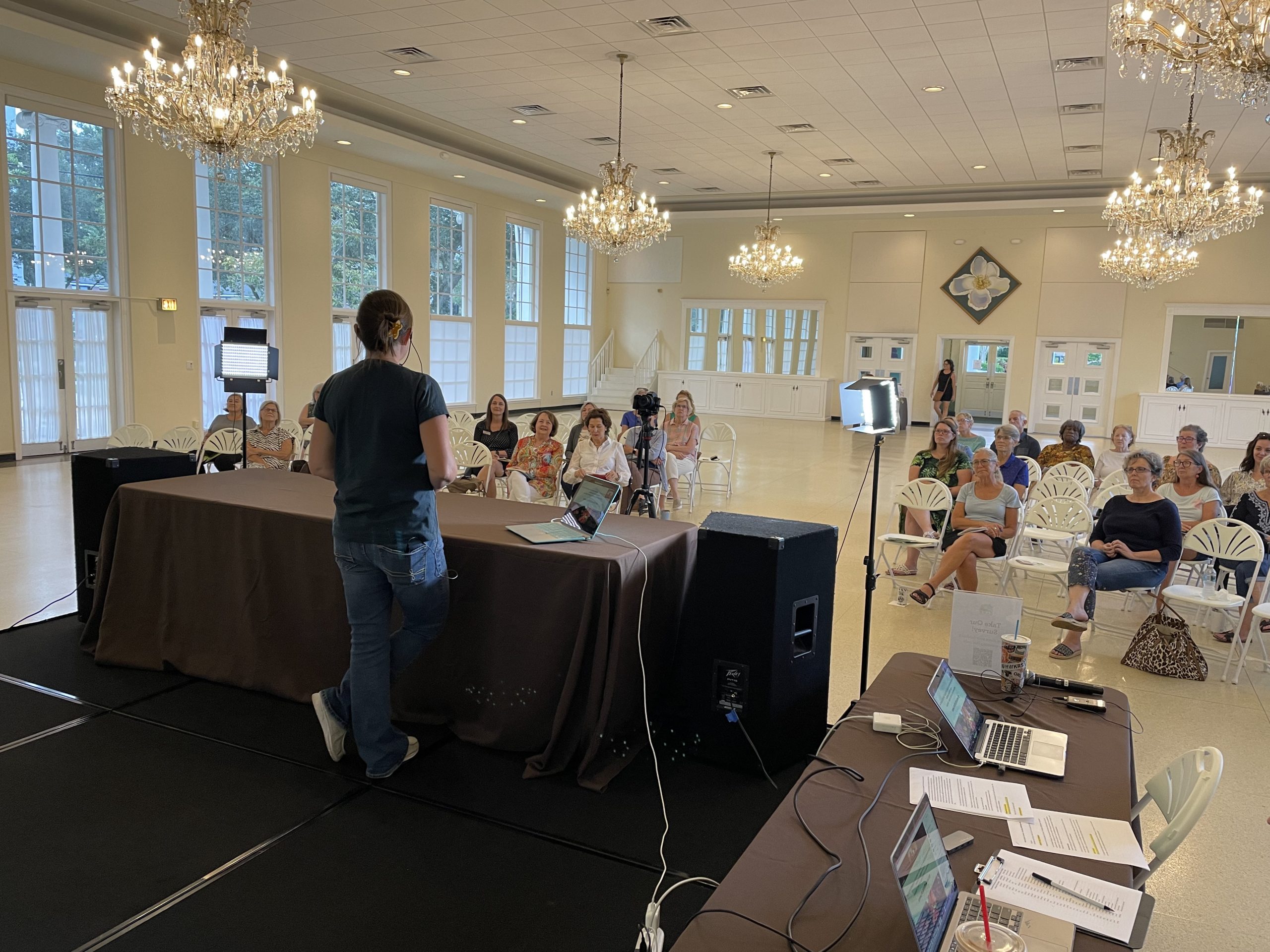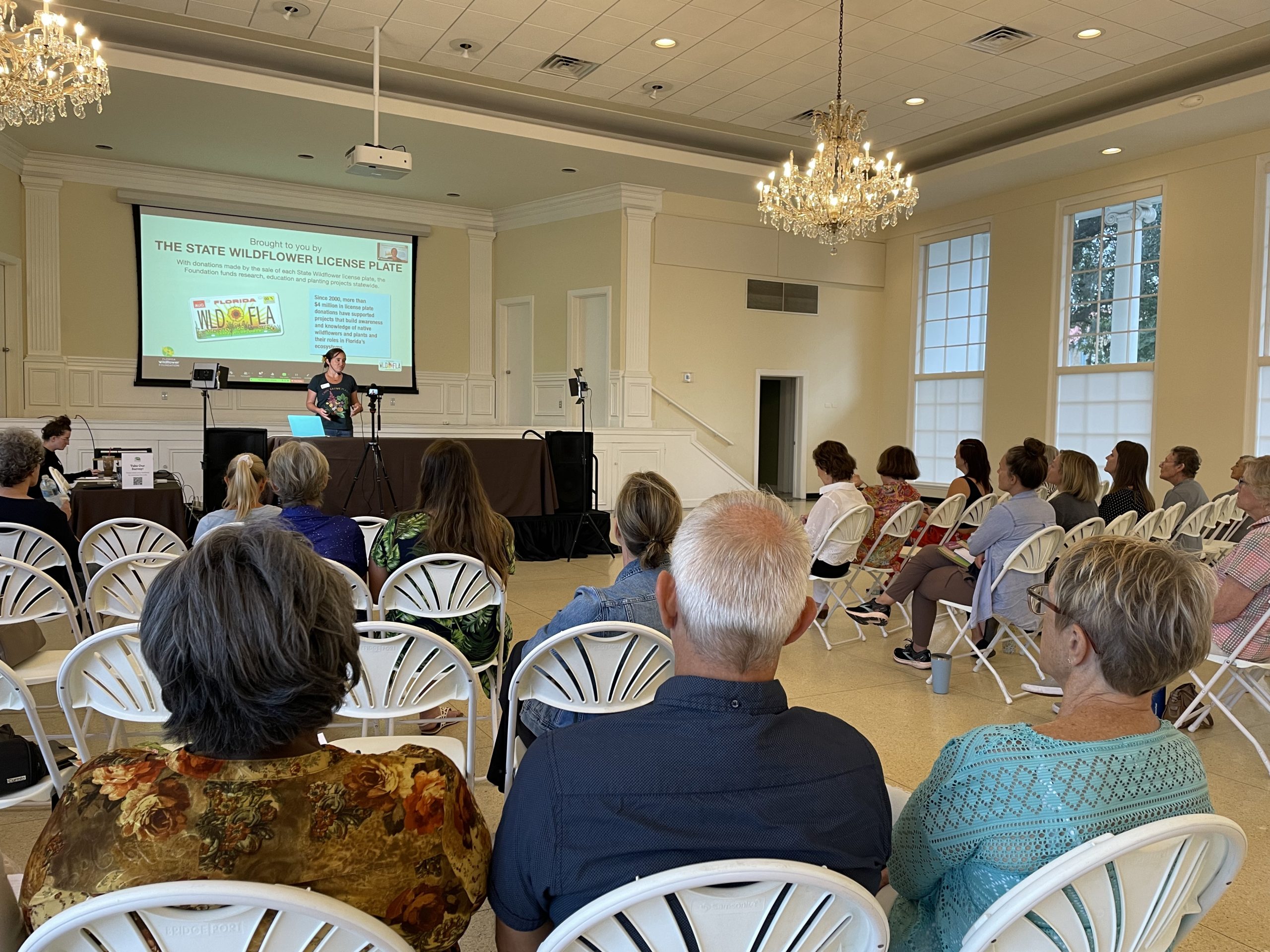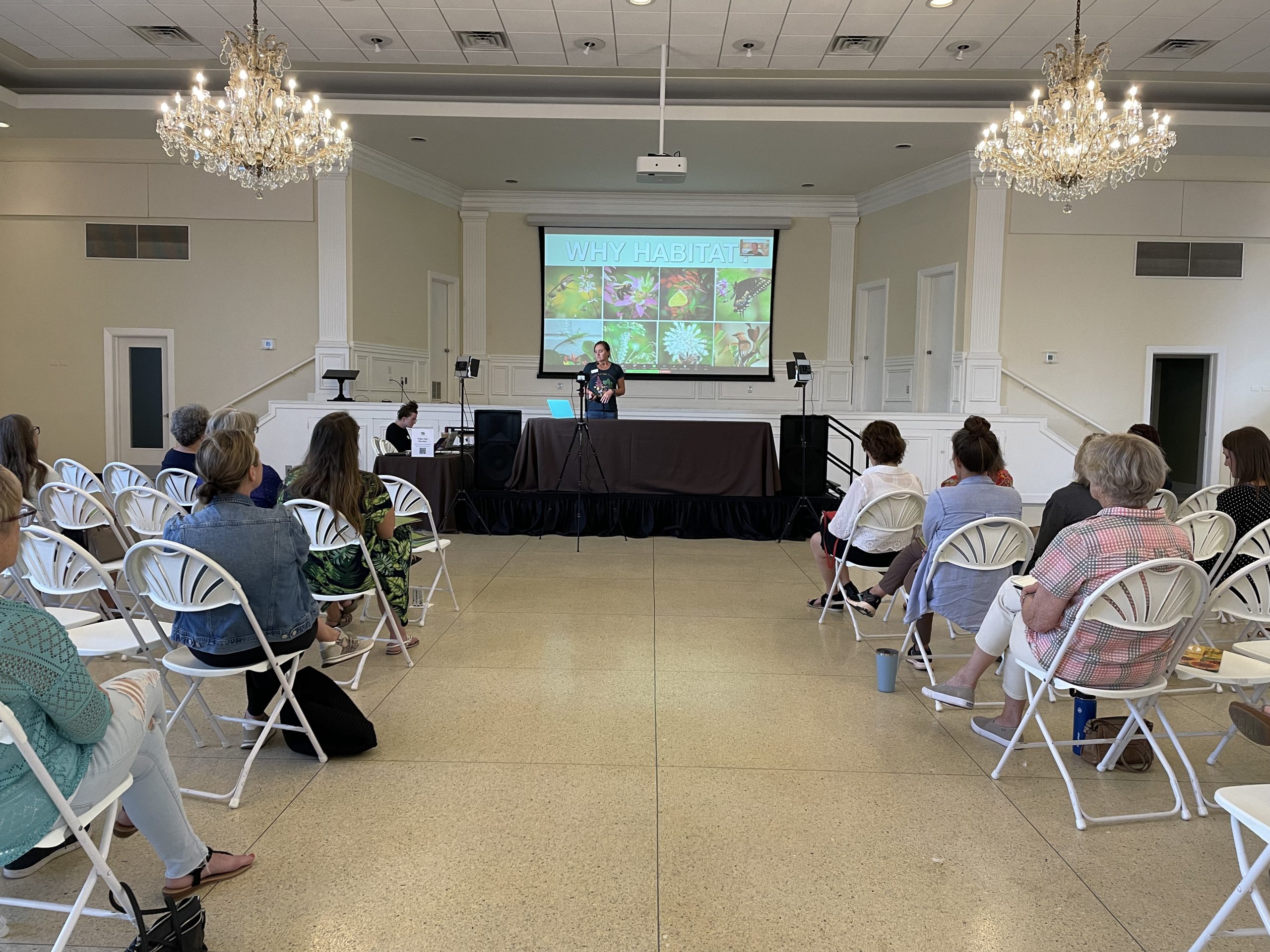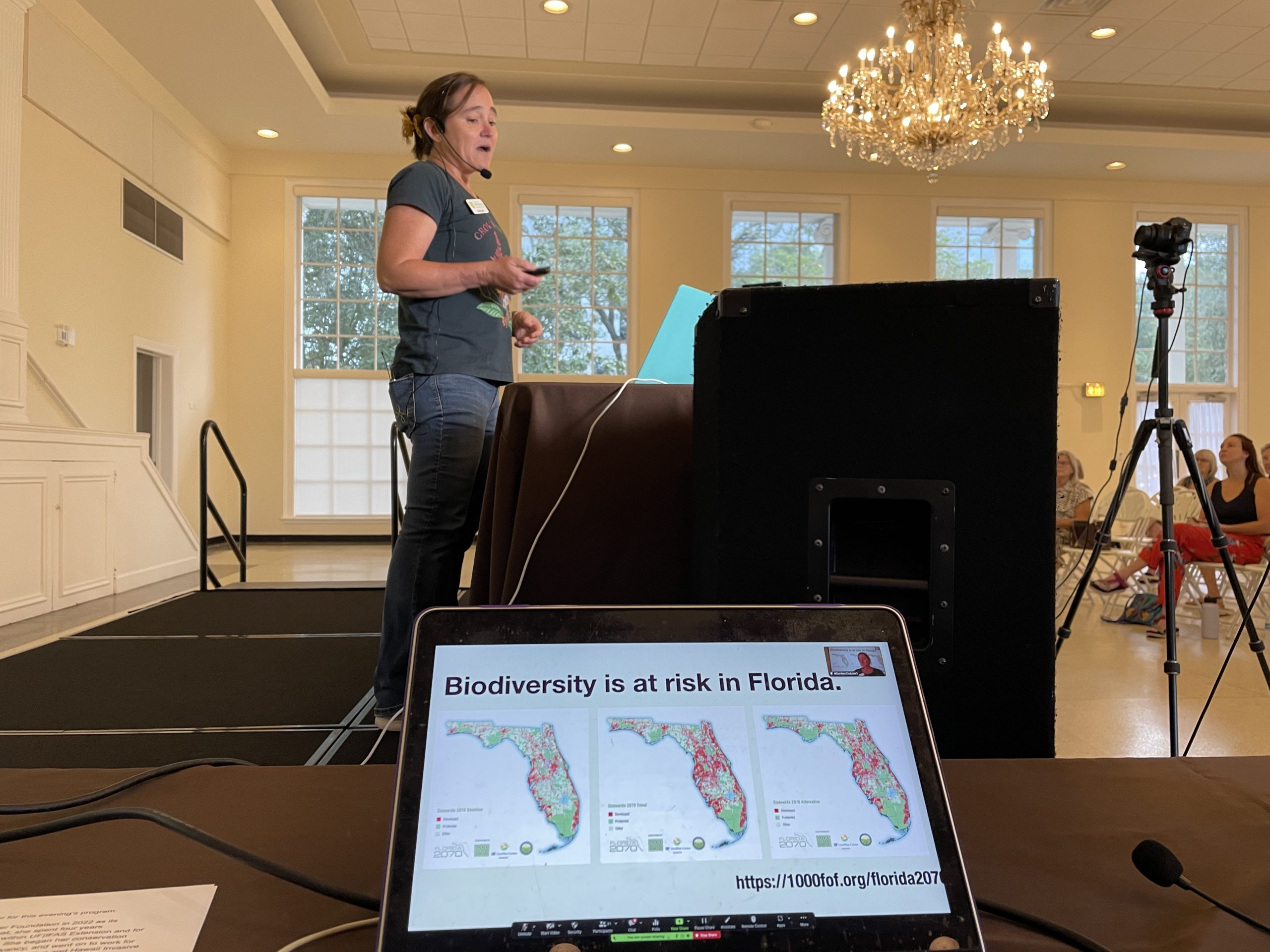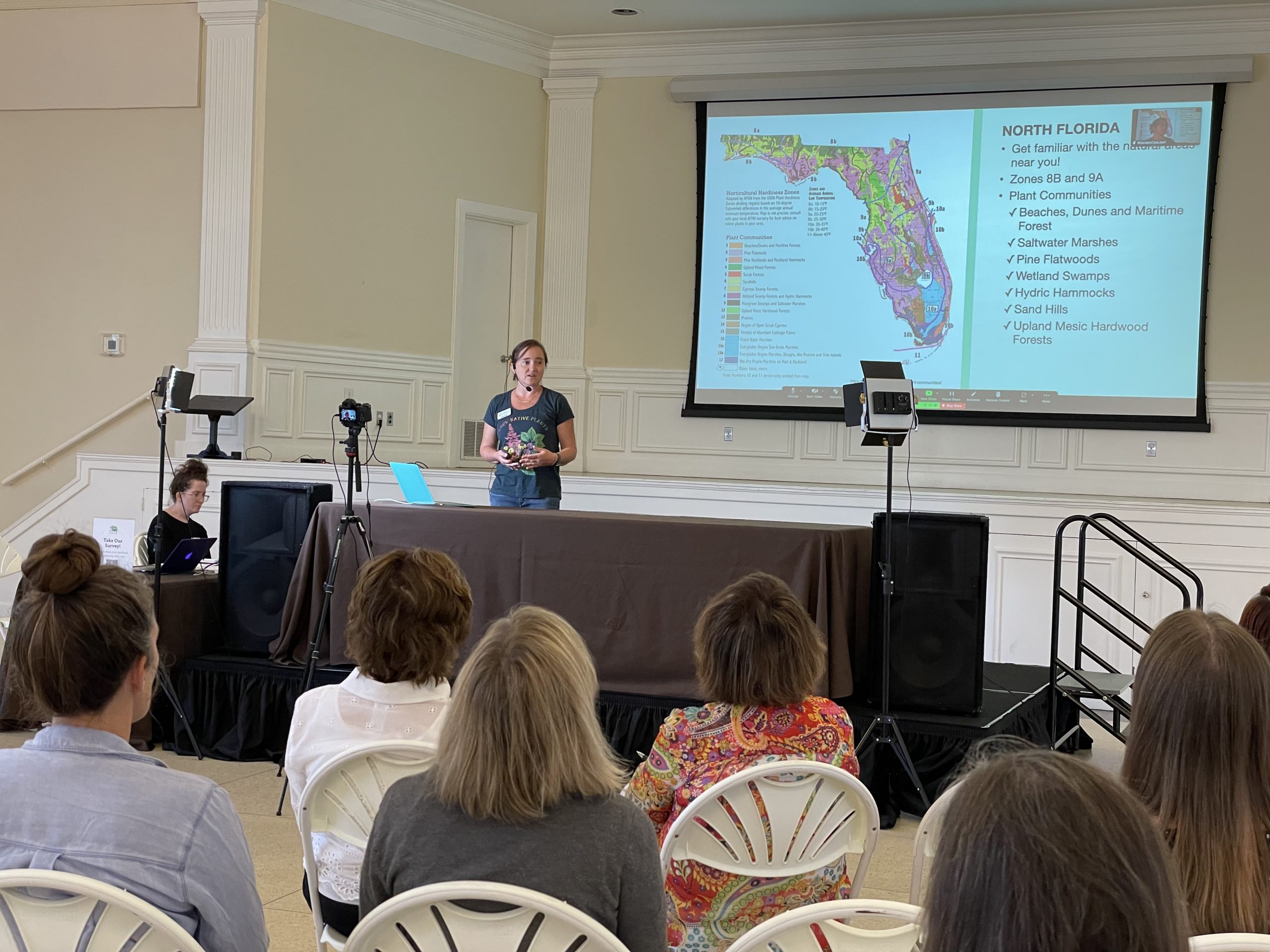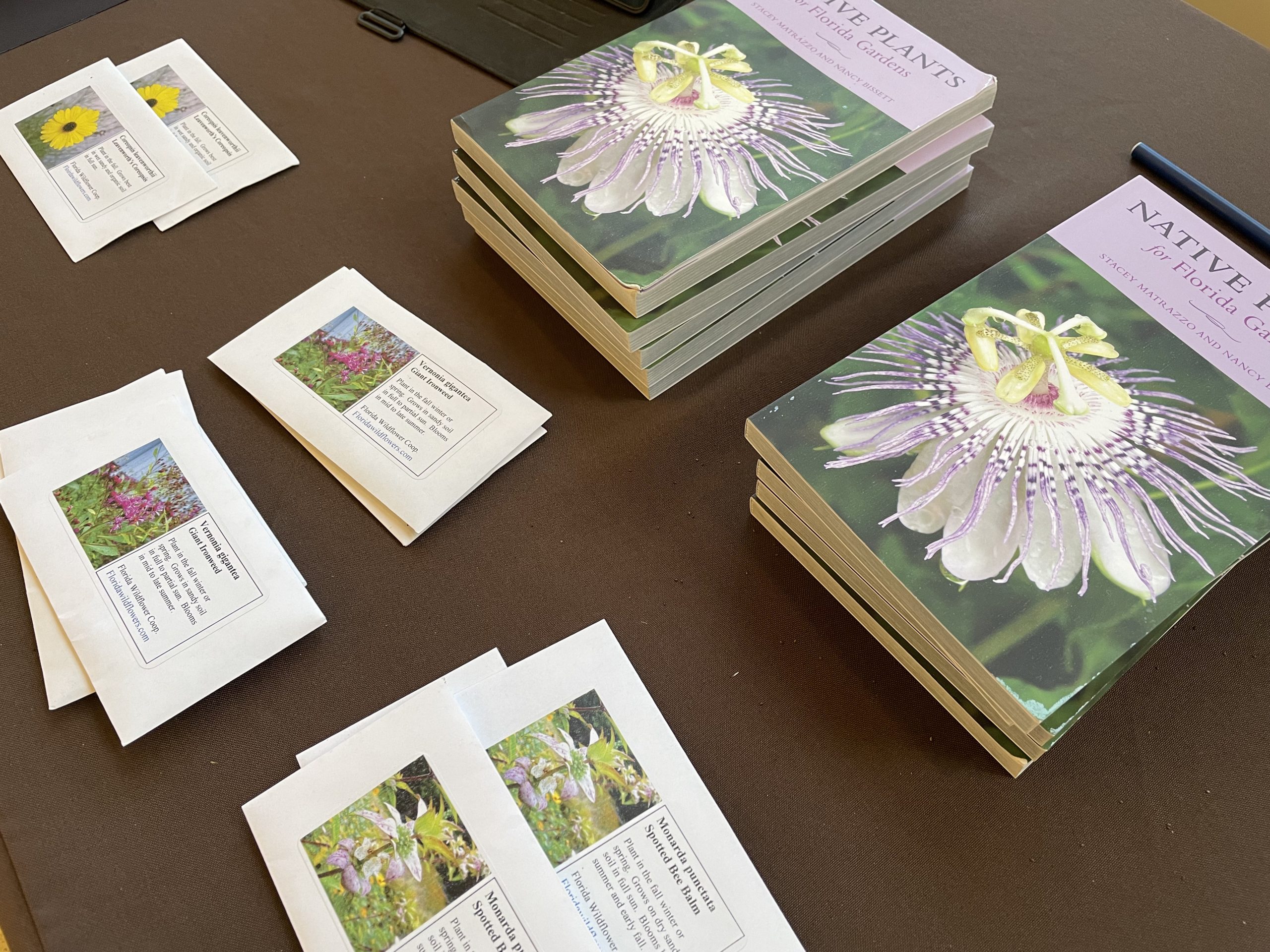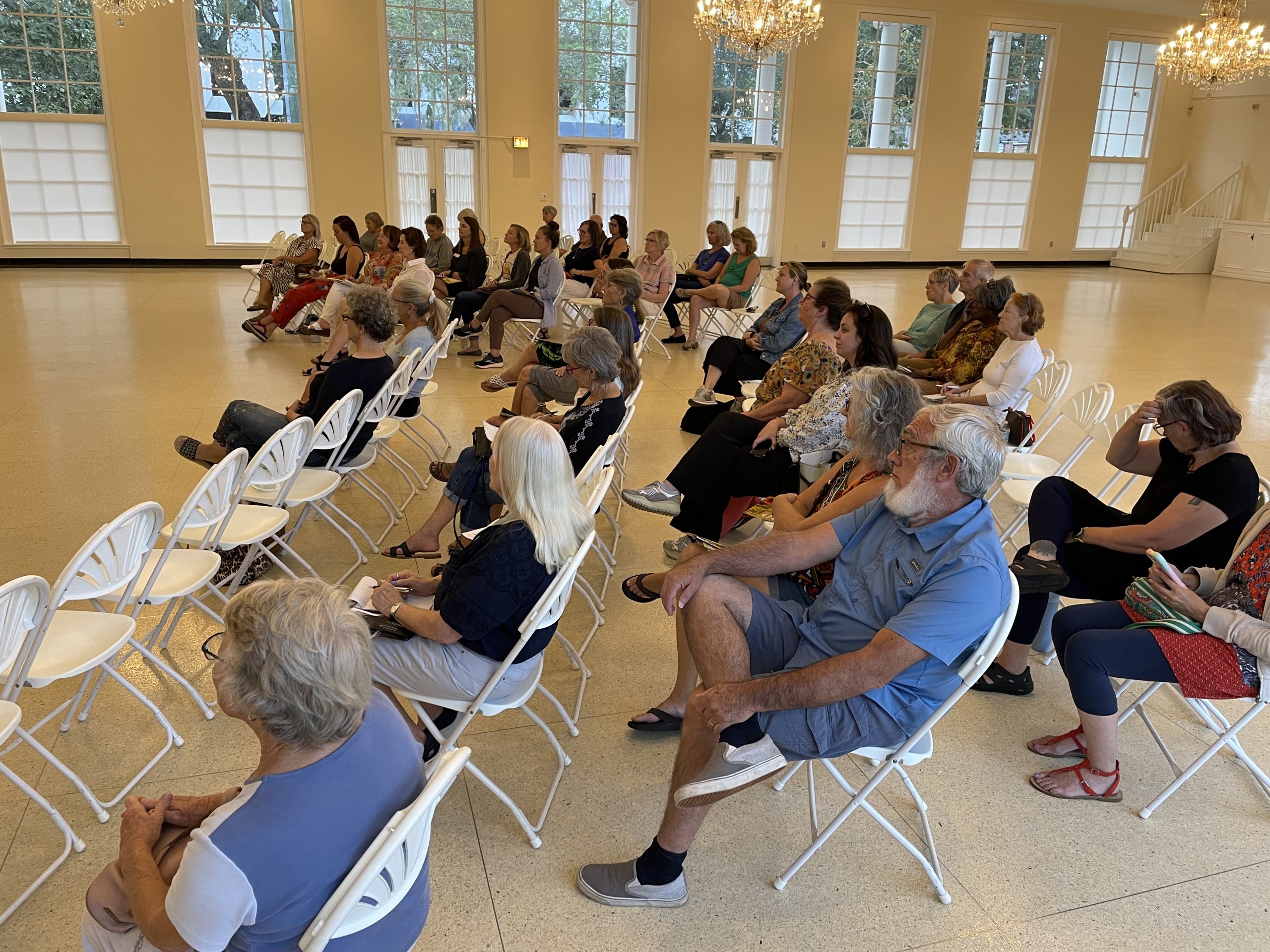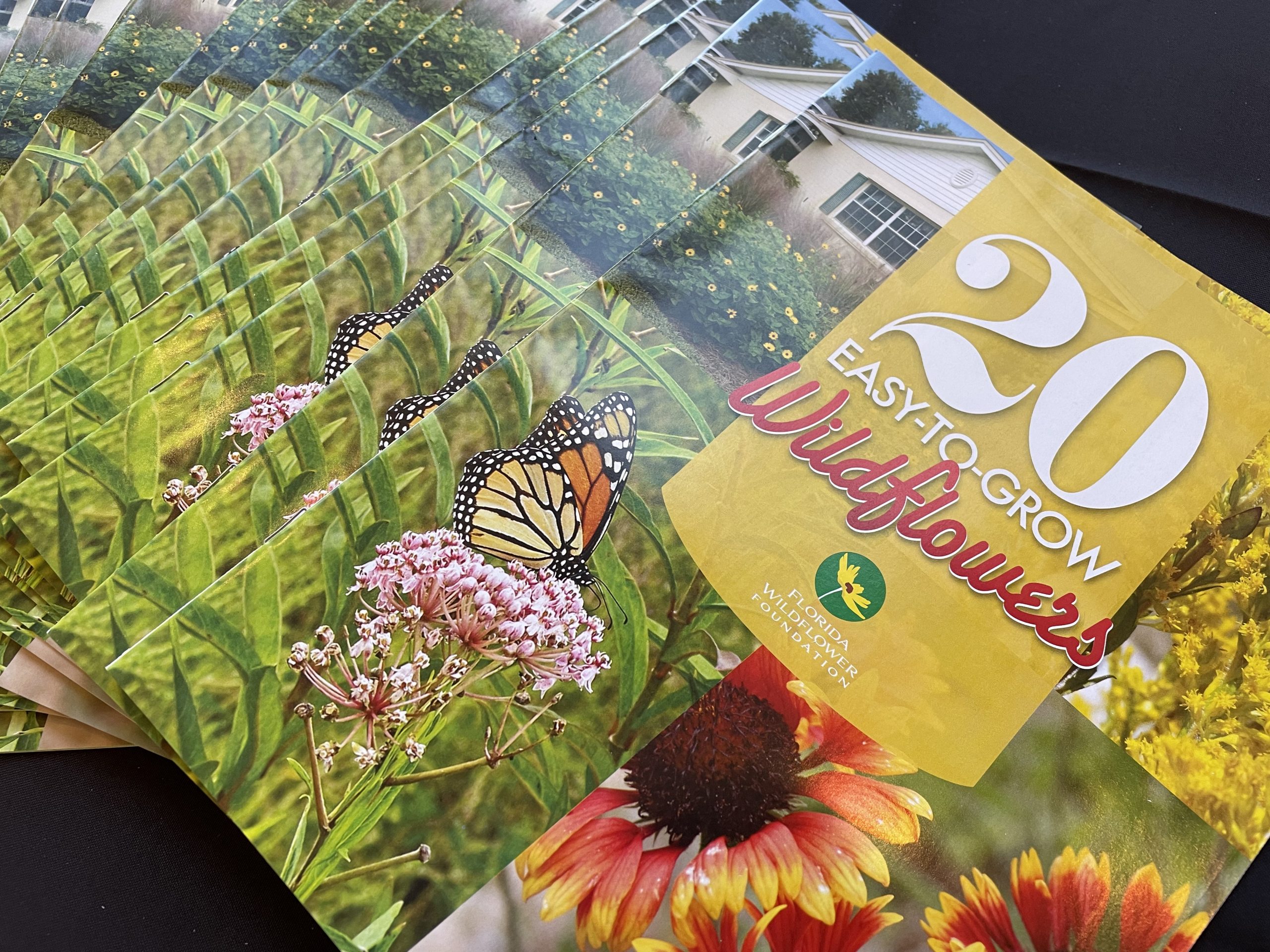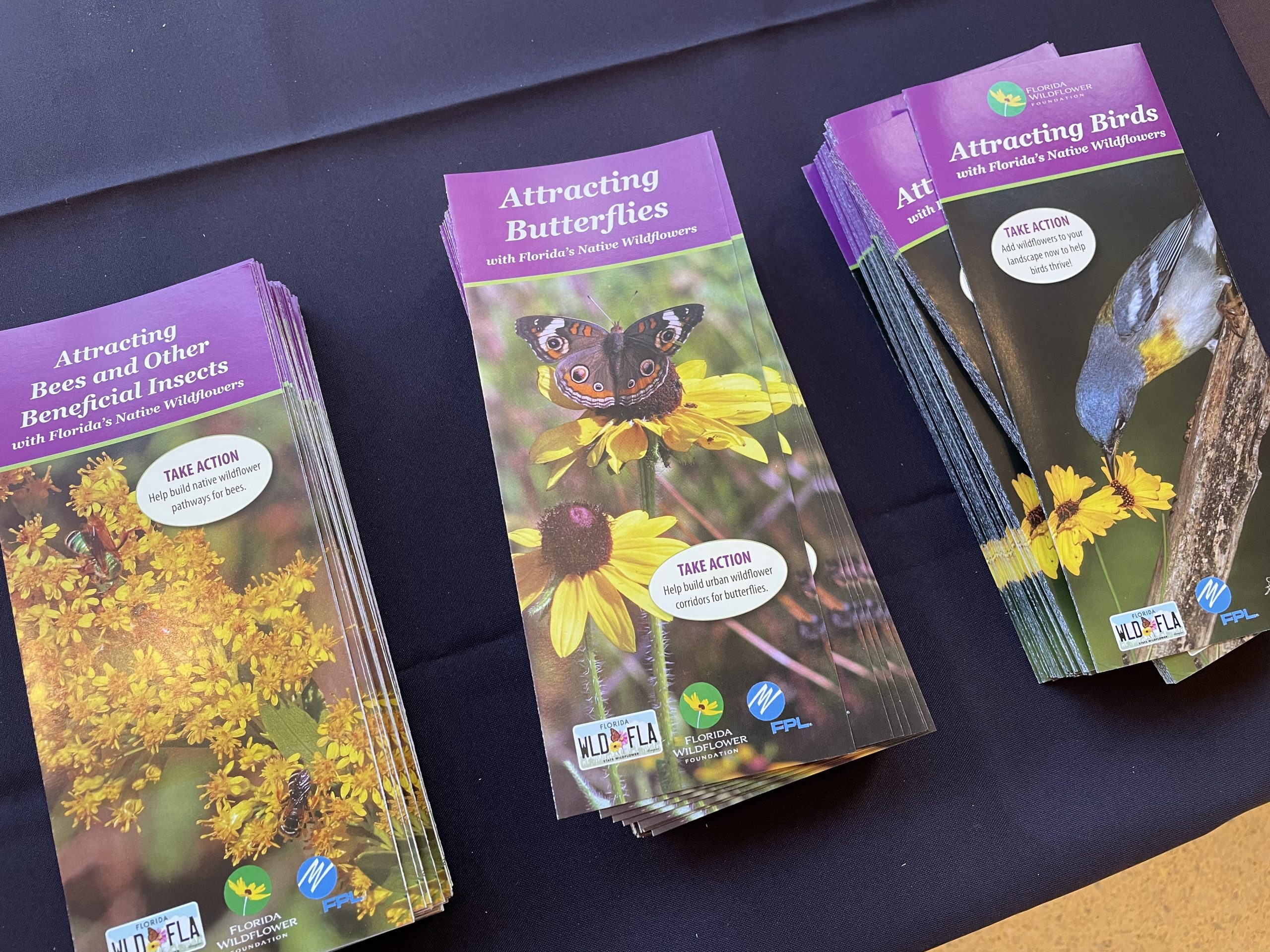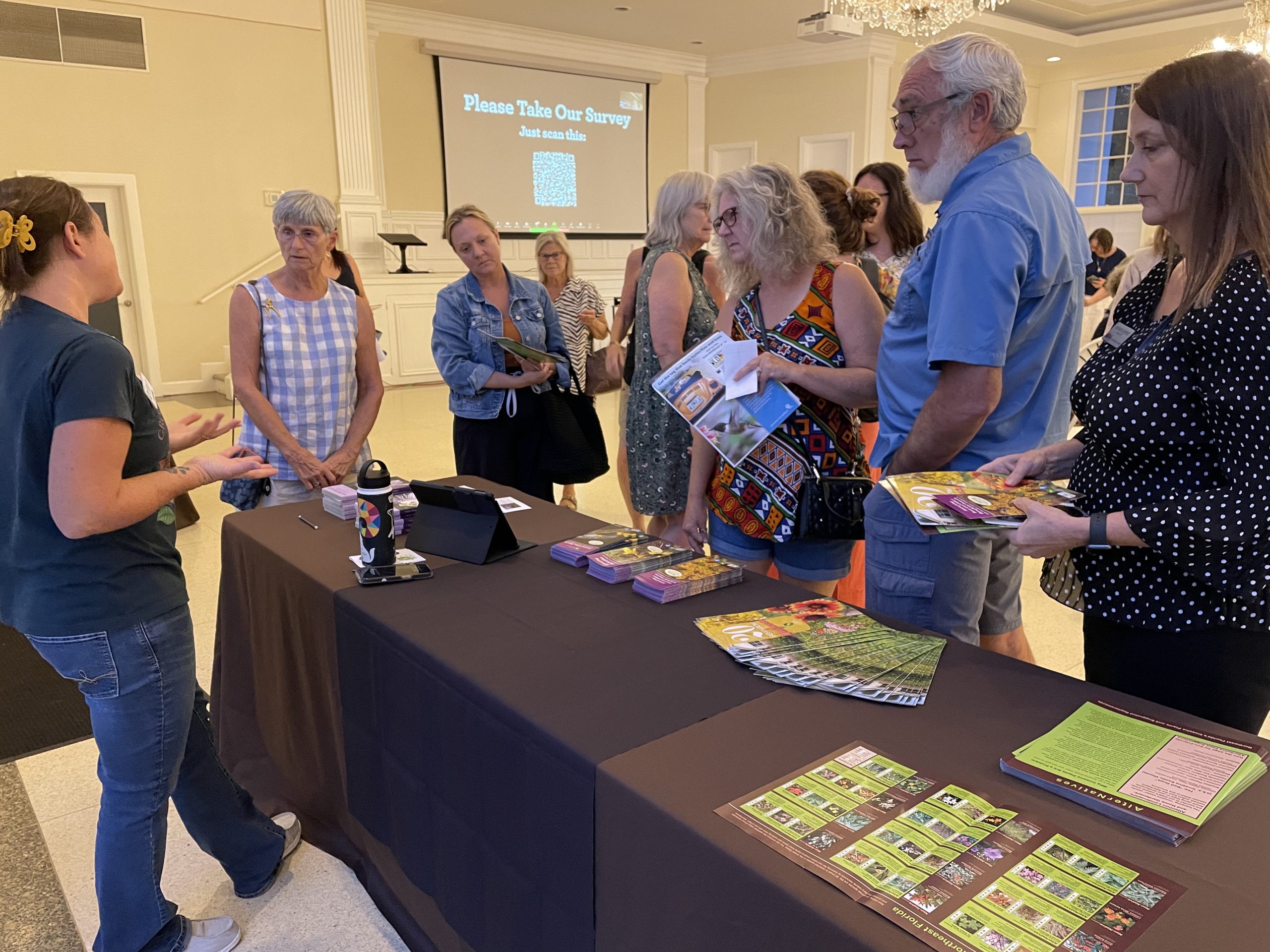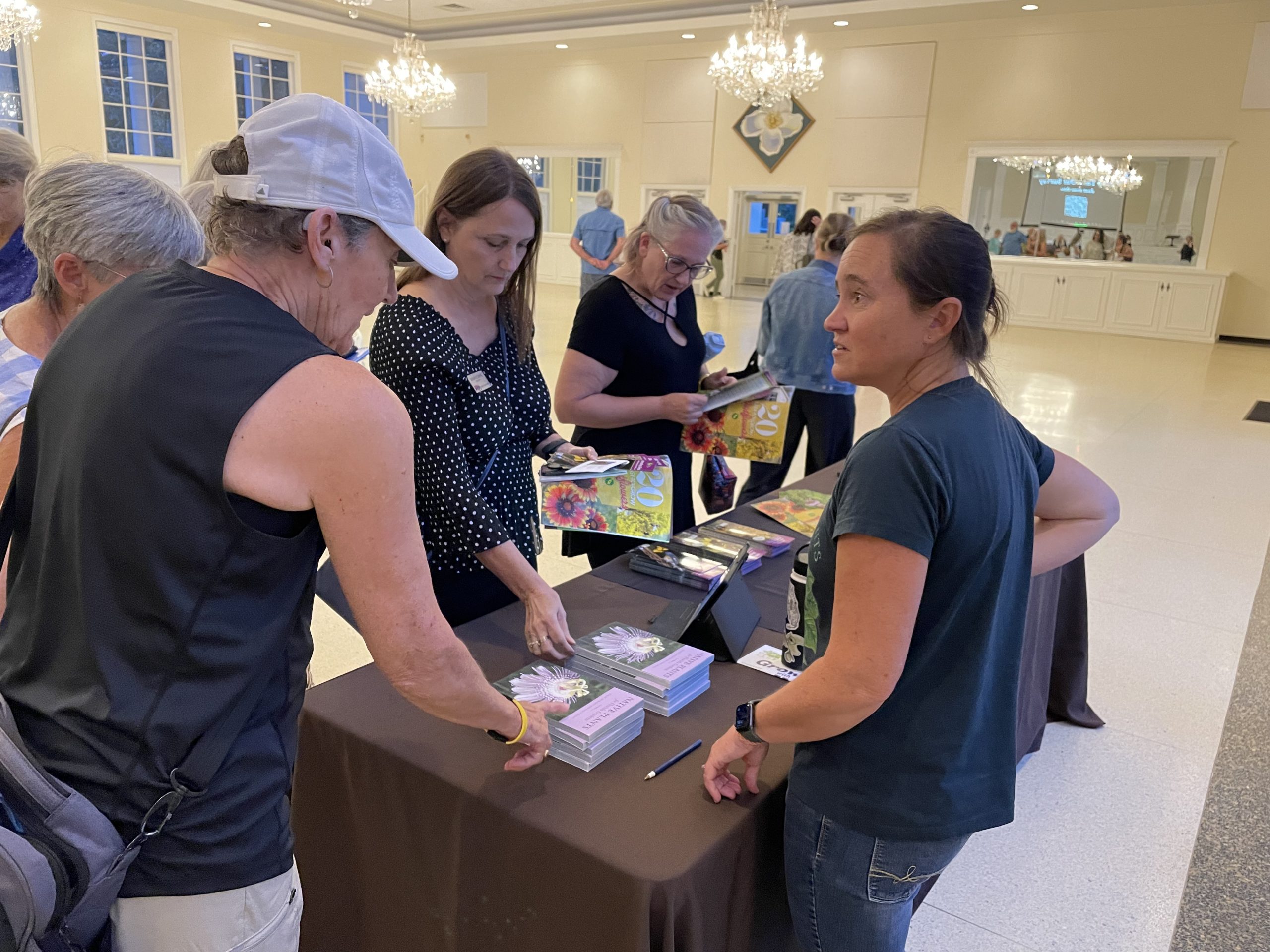On September 12 Emily Bell of the Florida Wildflower Foundation spoke to guests at #GardenClubJax about how to create a habitat for native pollinators, birds, and other wildlife in their own landscape with native plants. Guests learned how they can support local biodiversity, reduce the need for fertilizers, pesticides, and herbicides, and conserve water resources, all while providing food for local wildlife. Emily described the differences between local Florida regions and how plants native to one part of Florida may not necessarily do well in another.
Below is a list of North Florida’s Plant Communities to keep in mind when designing your native plant landscape. We have such a variety of habitats for local flora and pollinators!
- Beaches, dunes, and maritime forests
- Saltwater marshes
- Pine flatwoods
- Wetland swamps
- Hydric hammocks
- Sand hills
- Upland mesic hardwood forests
Guests were able to get a head start on turning their lawns into spaces of native biodiversity. Emily offered resources for guests to take home and share, such as a variety of pamphlets and booklets about native flora as well as seeds. Some of Emily’s favorite local wildflowers described in her presentation are ironweed, snow squarestem and goldenrod–all beautiful options for pollinator friendly landscape!
Emily Bell and the Florida Wildflower Foundation
Emily Bell joined the Florida Wildflower Foundation in 2022 as its communications coordinator. Prior to that, she spent four years coordinating invasive species programs within UF|IFAS Extension and for the Florida Invasive Species Partnership. She began her conservation career as an intern for The Nature Conservancy and went on to work for the Florida Department and Environmental Protection and Hawaii Invasive Species Council. She has more than a decade of experience with environmental outreach, planning, and network building. Emily is a third-generation native Floridian with a passion for Florida’s incredible native flora.
The Florida Wildflower Foundation’s vision is to ensure that wildflowers are recognized as essential to Florida’s ecological health, economy, and natural beauty. To enact this vision they protect, connect, and expand native wildflower habitats through education, research, planting, and conservation.
Some of their accomplishments include:
- Saving roadside wildflowers in 33 counties and three cities through the adoption of formal resolutions.
- Developing a classroom activity guide through which kids get to know Florida’s unique flora and fauna.
- Changing public perceptions that inadvertently damage Florida’s environment.
